
Five Surreal Works of Fiction You Probably Haven’t Read... and Slaughterhouse-Five
Isabel Waidner Recommends Megan Milks, Jess Arndt, Kurt Vonnegut, and More
My novel, Sterling Karat Gold, performs the real-life effects of governmental control and state violence on marginalized people—and it does so by recruiting time travel and fleets of UFOs into its project.
Disrespecting certain conventions that have been seen to accord literary value to a piece of writing—including the reliance on “realism,” and the splitting of literary fiction from other genres such as sci-fi or horror—has been a preoccupation of mine for a while. I have come to think of the novel as a—if not the—technology for the reproduction of white middle-class values, aesthetics and a certain type of acceptable nationalism. From this perspective, a concerted undermining of the form might mobilize its actual strengths, and help un-repress the potential of literature itself.
*
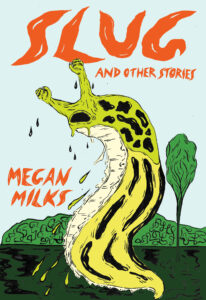
Megan Milks, Slug, and Other Stories
Milk’s collection opens with the short story “Slug”—in which the main character, Patty, metamorphoses into a giant version of the titular mollusk—and keeps one-upping itself after that. Unlike Gregor Samsa who woke up one morning an insect for no discernible reason, Patty, less subtly, and far less politely, becomes slug as a result of “mating” with another slug, the ursprungs-slug, Slug. This time, the metamorphosis hurts, and it thrills: Patty is into it, and we, the readers, are into her.
We are rooting for her as Slug slimes her face into an “amorphous blob.” Again unlike Samsa, whose narrative starts post-transition, Patty’s story breaks off as soon as transformation is fully achieved—though for no moment do we, the readers, believe that she won’t go from strength to strength subsequently! Patty has just come into her own; she has finally realized her slippery potential! As Milk writes in their immortal last line: “What will Patty do next?” A question I have neither been able to contemplate, nor get out of my head.
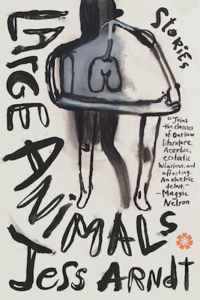
Jess Arndt, Large Animals
In the last short story in this collection, a newly divorced narrator lives in a bungalow in the Mojave desert, a few miles away from a military testing site. They spend their days doing nothing, or nothing much, and, crucially, being alone. These, we learn, are the conditions within which walruses arrive. The first walrus arrives in a dream, full weight on top of the sleeping narrator. But his, the walrus’s, physicality—his mammoth flesh, the deep cracks and creases in his hide, his yellow tusks—is described (and experienced, by the narrator) so viscerally, so embodied, that subsequent walruses appear to move down the rare-fication scale and into the reality of the story world.
Soon we, the readers, can’t tell whether the walruses are an internal or external event, and why should we care anyway, and what even is the difference—such is the power of Arndt’s prose to actualise dream states in fiction. Before long, walruses sprawl on every surface of the bungalow, and likely the reader’s one-bedroom flat in London: abject, desired, and overwhelmingly present.
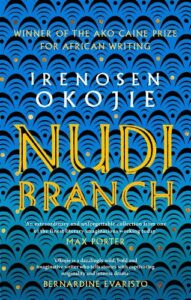
Irenosen Okojie, Nudibranch
Another short story collection, and this one opens with the make-or-break sentence, “The last monk told the tongue that holding a naked sheep’s head underwater would undo it all.” From there, Okojie goes more ominous, more imaginative, and more surreal, without ever losing control or the reader. A character misses an ear, yet has a “small translucent dragon’s wing growing against a rib.”
Another loses an eye, but gains a yellow fish iris, which “cries seawater no matter his mood.” Outsiders hop dimensions and jump back in time, and a little pink elephant breaks its neck to interrupt feelings of loneliness. If you think you’re beginning to get the drift, don’t. In Nudibranch, nothing is what you expect.
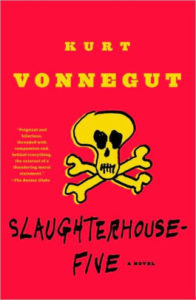
Kurt Vonnegut, Slaughterhouse-Five
Most if not all Lit Hub readers will know, Slaughterhouse-Five is a semi-autobiographical anti-war novel with classic sci-fi elements. It follows Vonnegut’s alter ego Billy Pilgrim, a US soldier in World War 2, who was captured by the German army, and who time-travels routinely. Whether the product of a mind suffering post-traumatic stress disorder, or whether it is what it is, Pilgim becomes “unstuck in time”—a hugely effective literary device to help contextualize frequent flashbacks and forward leaps in the nonlinear narrative.
Pilgrim is also kidnapped by a flying saucer and taken to planet Tralfamadore, another concept put neatly in the service of writing the real psychic consequences of war: Tralfamadorians are able to observe simultaneously all points in the space-time continuum, meaning time doesn’t move in a straightforward line, meaning death is a mere slap on the wrist to them. This trivialization of death and finality underpins their relaxed worldview, which, expressed by the famous catchphrase ‘so it goes’, provides an imaginary release from the unimaginable loss of human life during World War 2.
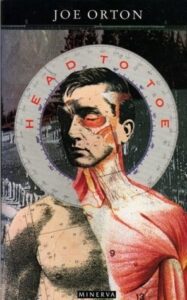
Joe Orton, Head to Toe
Researching my latest novel-in-progress, I re-read British sixties playwright Joe Orton’s entire back catalogue, including his early novel Head to Toe. First published in the seventies, it was written before his hugely successful satirical plays including Loot, known for their hilarious social critiques and stark realism. This, however, is the story of Gombold, who finds himself in the head of a giant a hundred miles high, yes, and sets about traveling downwards, that is, along the trajectory of the expansive body.
En route, Gombold encounters a gender-bending policewoman; finds himself in an assassination squad targeting the prime minister; and enlists in a war between the left and right butt cheeks. No, really. I love and admire Joe Orton—a gay working-class literary maverick, an autodidactic ex-convict—and consider his work a significant part of the cultural fabric that makes writers like myself possible now. But Head to Toe? Obscure for a reason. I wish Orton, who was killed by his lover at the age of just thirty-four, had lived long enough to make another, late-style attempt at surrealism. He would’ve nailed it.
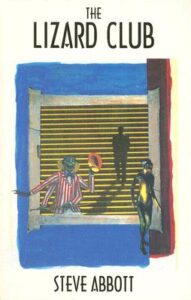
Steve Abbott, The Lizard Club
In a review for Full Stop magazine, poet Ted Rees describes the late Steve Abbott’s The Lizard Club as a novel that combines trenchant social commentary with an antic, surreal narrative. The book intersperses said narrative with what Rees terms ‘theatrical interludes that seem to have been inspired by Les Chants de Maldoror’, as well as fictional questionnaires, and a show-stopping finale in which Abbott collates his favourite last lines from 101 of his favourite books.
Effortlessly and promiscuously referential, to my mind The Lizard Club constitutes an example of what Lucy Ives recently called a “weak” novel—that is, a novel that only “weakly consents to participate in the conventions of genre, that is always about to fail to be a novel at all.” The Lizard Club fails with ambition and panache; it fails towards something else, something better. Did I say, people turn into lizards in this, Abbott’s last novel, all the way through, it’s like an epidemic. It’s like, all the gays are catching it. Fun and games, this book, with a core of devastation.
____________________________
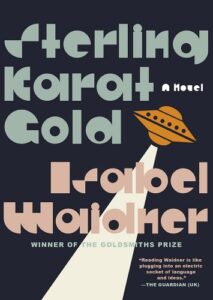
Sterling Karat Gold by Isabel Waidner is available from Graywolf Press
Isabel Waidner
Isabel Waidner is a writer based in London. They are the author of Corey Fah Does Social Mobility, We Are Made of Diamond Stuff and Gaudy Bauble. They are the winner of the Goldsmiths Prize 2021 and were shortlisted for the Goldsmiths Prize in 2019, the Orwell Prize for Political Fiction in 2022 and the Republic of Consciousness Prize in 2018, 2020 and 2022. They are a co-founder of the event series Queers Read This at the Institute of Contemporary Arts, and they are an academic in the School of English and Drama at Queen Mary University of London.



















